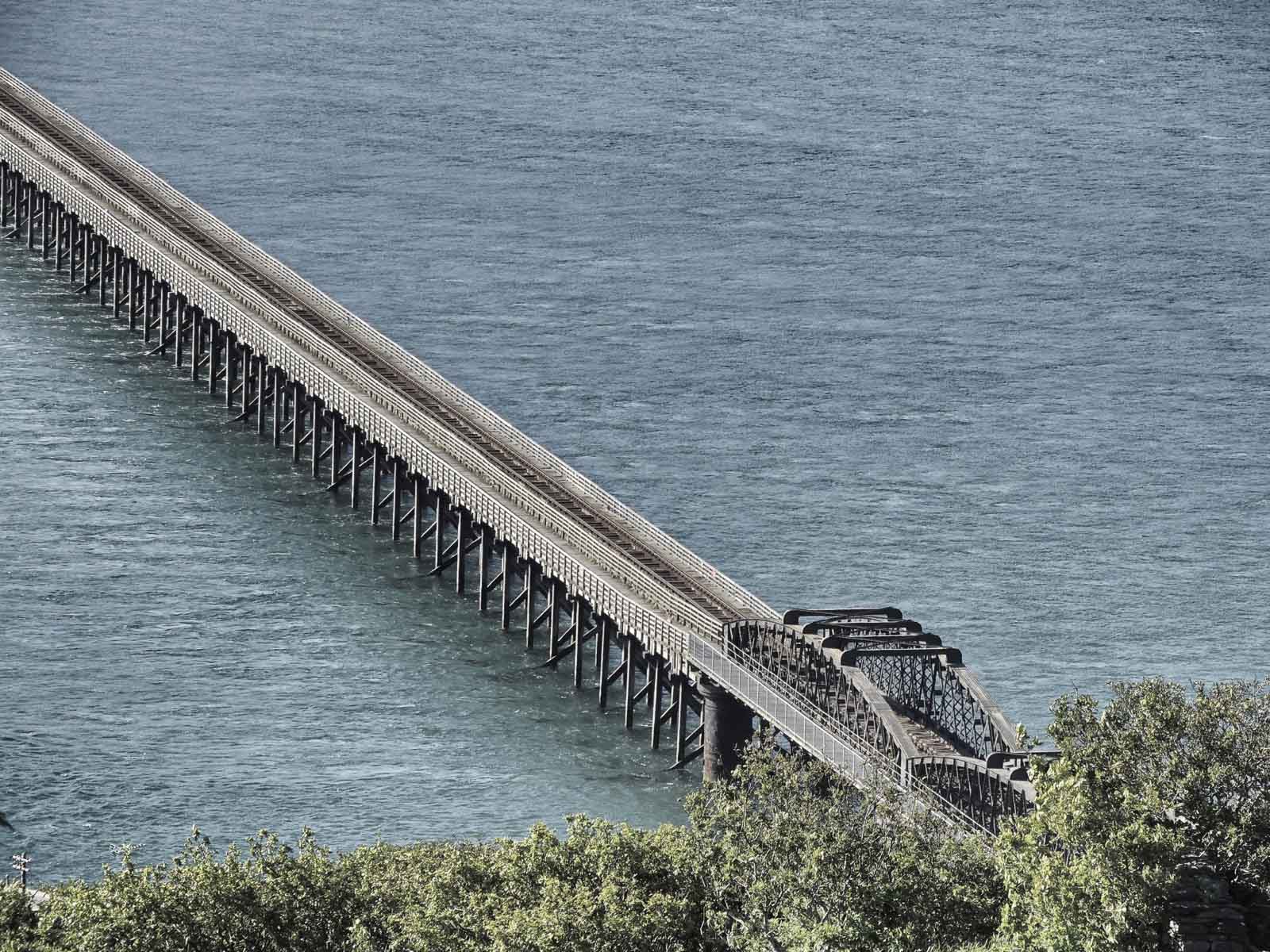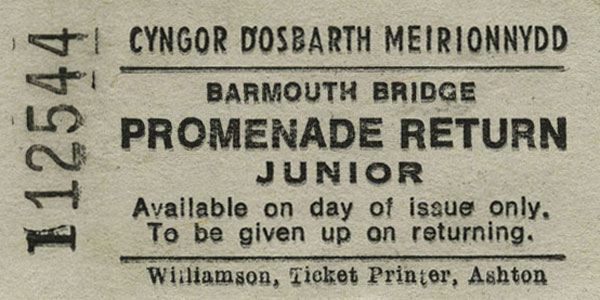Barmouth Bridge (“Pont Abermaw” in Welsh) was opened in 1867. Also known as Barmouth Viaduct, the bridge contains a single standard gauge railway track and a pedestrian walkway.
Barmouth Bridge

The bridge is Grade II* listed and is around 700 metres long and contains wooden trestles supported by cast iron piers. It is one of the longest wooden viaducts in the UK.
It forms the main link from the southern and northern ends of the Mawddach Estuary and the Cambrian Coast railway. It is also the end (or starting) point of The Mawddach Trail footpath which runs the old line from Dolgellau.
The Barmouth side of the bridge originally contained a drawbridge to allow tall boats to pass, but that was later replaced by a swing section.
Tolls used to be collected at the Barmouth side, but this ended in 2013. In 2016 there is talk of the pedestrian section being closed due to council cuts, as Gwynedd Council pay 10% of the maintenance costs to Network Rail.

The Round House

This Round House was erected in 1834. It was built as a lock-up where drunkards were detained until they became sober. It was also a place of detention pending the transfer of an accused to the nearest place where justice could be administered. The key was kept by the Parish Constable.
The building is divided by a partition wall forming two cells of equal dimensions. One cell was reserved for men and the other for women: “There lived at Barmouth at this time a number of the fair sex who habitually caused disturbances”. This, possibly is the reason why half the Round House at Barmouth was earmarked for women.
The building of the Round House was the outcome of a meeting of the freeholders and principle inhabitants of the town, which was held at the Corsygedol Arms Inn on the 21st October 1830. After some discussion the meeting passed the following resolutions:
FIRST: That it is a matter of notoriety that drunken riots take place very frequently in the town of Barmouth - and that such wanton mischief is perpetrated at late hours insomuch that the peace and comfort of the respectable inhabitants are sacrificed - and great injury done to the morals of the neighbourhood.
SECOND: That the evil is increasing because the Constables are unable to act effectively from the want of some receptacle in which to place offenders until they can be brought before the Magistrate.
THIRD: That application be therefor made to the Quarter Sessions praying the Magistrate to take into consideration the evil complained of, together with the poverty of the Parish and to order a Lock-up House to be provided in the town at the expense of the County rates.
FOURTH: That the Magistrates be further requested to take measures for the appointment of a few Special Constables.
The building was completed in 1834 and ceased to be used as a lock-up only when the County Authorities erected the Barmouth Police Station in 1861.




